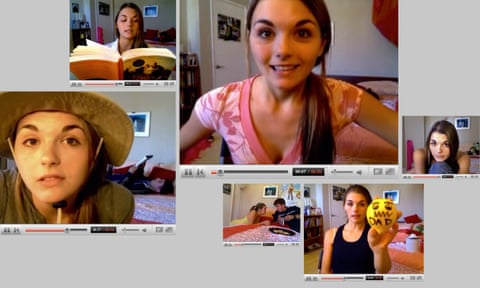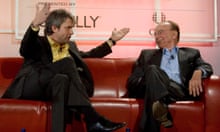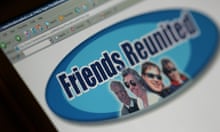In June 2006, a 16-year-old girl began a video blog on YouTube. Her name was Bree, she’d been lurking in the burgeoning community for a while. She was a self-described dork, she thought her hometown was really boring – “Maybe that’s why I spend so much time on my computer …”
She was funny, friendly, had great eyebrows. Her first few videos were relatable and cute, introducing her friend Daniel and complaining about being home-schooled and having to do homework in June. It soon became clear she was pretty lonely, which was probably why her username was Lonelygirl15.
Bree was one of a slowly-growing community on YouTube of confessional video bloggers. They poured their lives into their webcams, not yet an automatic feature on laptops as they are today. Their follower bases grew slowly but steadily, with regular, and often grainy, videos about their day-to-day lives. They were largely ignored by the mainstream media, who at the time dismissed YouTube as just a repository for cat videos.
Lonelygirl15 changed all that. Her followers quickly ballooned and she became one of the young site’s most popular stars. The New York Times had a recurring blog about her. She had her own forum. Hundreds of people wanted to be her friend on Myspace.
The thing is, Bree wasn’t real. Lonelygirl15 actually had a small team of writers. Bree and her best friend Daniel were played by actors.
YouTubers and the media had been duped. Yet this was no mere flash in the pan hoax – this was YouTube’s first web series. This was the first time someone proved you could actually make money on YouTube.
And that changed everything.
Remember Lonely Island’s “Lazy Sunday” video? It was the one where Andy Samberg and Chris Parnell rapped about a Sunday getting cupcakes and going to the movies. Miles Beckett does. Because that’s the video that began his obsession with YouTube.
“Someone posted it on Myspace, I think it was in December 2005?” he says. “And that’s how I found out about YouTube.”
Back then, YouTube was just getting started. It wasn’t yet a year old, but it was growing quickly. The next summer it would be one of the fastest growing sites on the internet and would go on to be bought by Google for $1.65bn. Then a doctor, Beckett was among the millions of visitors to the site in its infancy, following the community and learning from it.
One of the most-viewed videos from the pre-Lonelygirl15 era of YouTube was of two guys lipsyncing to the Pokemon theme songs. It was all filmed on their webcam and netted them about 24 million views before it was removed.
Beckett had a thought. How could you really tell what was real and what was fake on YouTube? Anyone could buy a webcam or cameraphone and upload what they wanted. So how easy would it be to create an entirely fictitious YouTuber?
“I thought it would be really cool if there was a video blogger and you told the story just like you would a TV show,” he said.
He sat on this idea for a while. Then, one evening at a karaoke bar in LA, he met Mesh Flinders.
The two hit it off so well, Beckett took a chance. He told Flinders about this new medium and his idea for a new story on it. Within a matter of days, they began writing the script. Within two weeks, they had the entire plot points for the first three months of videos.
The story goes like so: our protagonist, Bree, is a homeschooled 16-year-old who doesn’t have a lot in the way of friends. Her days are spent on the internet, doing homework or hanging out with her one friend Daniel. She seems like a happy-go-lucky teenager, curious about science and history … except her parents are part of some strange religion, possibly a cult.
For Flinders, who grew up on a commune in Northern California, it was actually a story which was a long time in the making. “I didn’t see the outside world ‘til I was 14/15,” he says. “So I knew what a girl who had been homeschooled her whole life would be like – because that’s what I was like.”
The most important thing? People needed to believe Bree was real. Beckett and Flinders watched all the main YouTubers, studying how they spoke and what kind of set up they used. So with Lonelygirl15, they did everything they could to make it feel completely authentic.
The first couple of videos they put up didn’t feature Bree at all – they were video replies to some of the site’s biggest stars, designed to take advantage of the close-knit community feel YouTube had at the time. They did the job, piquing people’s interests as they encouraged Lonelygirl15 to post more.
As far as Beckett was concerned, it was a race against time before someone else pipped them to the post.
He said: “Somebody was going to create a scripted show on YouTube that uses the vlogger format and if they were marketing savvy they would make it feel real so there would be talk about it.
“If we didn’t do it, then somebody else would.”
The business side was headed up by their friend Greg Goodfried, a lawyer who later became one of the show’s producers. His wife Amanda, then working at the Creative Artists’ Agency (CAA), was tasked with maintaining Bree’s Myspace page.
They had a plan, they had the webcam, they had the scripts. All they needed now, was the right girl for the part.
Jessica Lee Rose was not interested in the internet. Sure, she had a Myspace profile, but it wasn’t something she used every single day.
She had just moved to Los Angeles after graduating from New York Film Academy in Burbank, working two jobs while pursuing a professional acting career. Her LA life was just getting started when, one day, she stumbled across a casting call on Craigslist for a project called The Children of Anchor Cove.
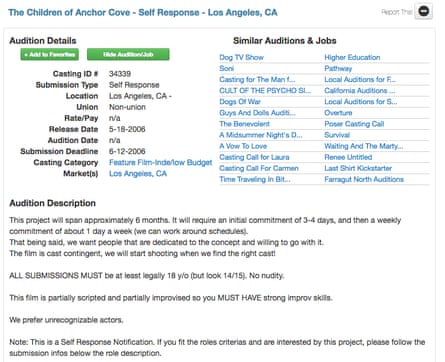
She got an auditon – but she almost didn’t make it. “I wasn’t that familiar with traffic in LA yet,” she remembers. “I didn’t allow enough time and I almost called to say I couldn’t make it!”
It’s just as well she got there. It was only her second or third audition – and she nailed it.
Though she was 19 at the time, it wasn’t a huge stretch for the casual viewer to think she could be 16. It also turned out she too, like Bree, had been home-schooled at one point. Best of all? She was fresh off the plane. No casting agency in the city had seen her yet. Rose was perfect for the part in so many ways.
They also needed the best friend – Daniel, AKA Danielbeast. That role went to Yousef Abu-Taleb, then a bartender and a waiter. He’d moved to Los Angeles a year before and was one of the few who came into the audition not looking like he stepped out of an Abercrombie & Fitch catalogue – Daniel was always meant to be kind of dorky, so his look clearly worked in his favour. All he’d seen of YouTube at that point were a couple of videos of people falling over.
Neither of them knew until after they got the part that it would be on the internet. The creators explained the project to them in a cafe in LA. Abu-Taleb was totally fine with it. He says: “You could have told me I was performing on a street corner and I’d have been like, yes!”
But Rose was heartbroken. Suddenly her first part didn’t seem such a golden opportunity.
“When you’re 18/19, you think about going to LA, and how you’re going to be in a movie or a TV show,” she said. “Then I found out it wasn’t a movie and it was going to be on the internet I instantly though this is some scam. I really thought this was what I’d been warned about moving to Los Angeles.”
The notion of a web series as a mainstream product, as it can be now, just didn’t exist at the time. Neither did the slew of YouTubers who had made it big enough to make money out of their video blogs. It was no wonder she thought it seemed dodgy. She called Abu-Taleb about an hour after the meeting, distraught. “She was like, I can’t do it,” he says. “I think she thought it seemed a little sketchy because online all there really was, was porn. She almost thought she wasn’t going to do it.”
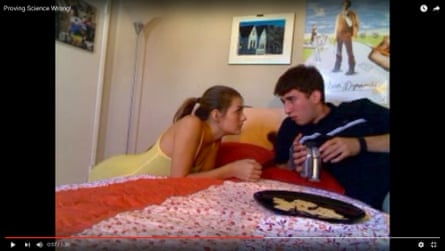
In the end, they both decided to give it a shot. Whatever existed of their actual internet profiles had to be deleted or made private.
Now the work could begin.
“Hi guys! so this is my first video blog, I’ve been watching for a while and I really like some of you guys on here.”
“My name is Bree, I’m 16 …”
That’s how the first LonelyGirl15 video featuring Bree starts. It’s just Rose and the camera and a touch of goofiness. The bed behind her is decorated with cuddly toys and a floral bedspread. On the door is a big, pink, fluffy feather boa.
This was actually Flinders’ room. They’d bought a bunch of stuff from Target so they could make it look like a typical teenager’s room.
The first few videos followed the same formula as other popular vloggers. Here was this cute girl, speaking into a camera about her life. Slowly they introduced Daniel, who mainly sat on the bed in the background while Bree recorded her video. People took to her – they found her charming, cute and funny.
Behind the scenes, Beckett was obsessing over how YouTube worked. How did a video get on the most viewed section? How did it climb the charts? When they realised YouTube counted every single comment including the ones you made yourself, they would make it their mission to reply to every single one – so they appeared in the most commented section constantly, boosting their profile, adding more views.
“If you could just get it into the most viewed for the week, you might get into the most viewed for the month,” said Beckett.
They also mathematically figured out at what point in the video YouTube’s algorithm would scrape the preview image. Flinders said it made a huge difference. “If it was a good freeze frame, you would get like 100,000 more views.
“Miles figured out the algorithm – from then on we could choose our freeze frame. We could make a freeze frame that was thematically connected to the episode.”
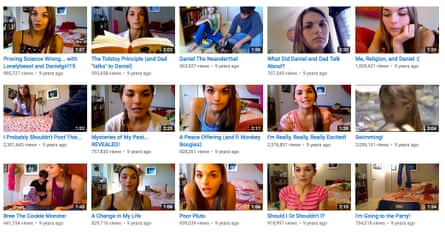
Their efforts paid off. The viewer counts kept rising. Lonelygirl15 appeared in the most viewed section more and more.
The original plan was to create about six months’ worth of episodes, create a buzz and then disappear to create an indie blockbuster. But YouTube’s burst in popularity changed all of that.
In the summer of 2006, YouTube became the fastest-growing website on the internet. People were flocking there to watch what it had to offer. And if you, like Bree, were a YouTuber who updated every two days, you were guaranteed to build a following.
The first video starring Rose went up on 16 June. Two weeks later, a video they posted on 4 July, Independence Day in the US, got 50,000 views within two hours. It was called My Parents Suck and it was the first time Bree got upset on camera. It was also the first time she hinted at her family’s mysterious religion.
Up until that point, previous videos would reach the 50,000 - 100,000 mark within a week or so. By the end of the week, it was at half a million.
Flinders says they soon realised the audience they’d have with an independent film just couldn’t compete with the audience they found on YouTube. He says: “Far more people were following her on YouTube and interacting with her on YouTube than would be interested if we went to direct a film and get it into Sundance.”
But as her popularity grew, so too did the suspicions.
Beckett thought people would figure out the truth a lot sooner than they did. “I didn’t think it would go on as long as it did. I was a little surprised that the mystery of whether or not it was real lasted as long.”
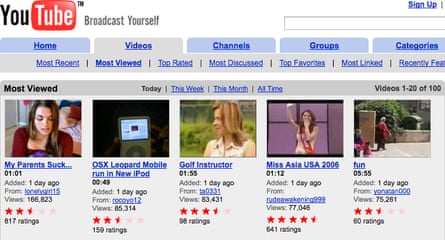
As Lonelygirl15 became the most-subscribed channel on YouTube, beating Peter Oakley AKA geriatric1927, speculation grew. People had questions, but they never had any hard evidence.
One of the main giveaways was the increasingly obvious plot line developing. Bree found out Daniel definitely did have a thing for her, posting a video about it, of course. They fell out, made up – standard teenage drama. There were lighthearted videos about science and hiking ... except when Bree talked about her mysterious religion. It then turned out she had been chosen to participate in some sort of ceremony, one which even her parents wouldn’t be able to attend. Fans’ questions inevitably built to a crescendo.
Yet all the while, none of the videos were discussing the controversy. Usually, YouTubers would respond to the constant questions about hoaxes in their comments. But not Bree.
So fans began signing up at lonelygirl15.com’s forum to discuss their theories. Sleuths noticed the site had actually been registered before Bree even started posting – in fact it had been registered by Beckett and Flinders.
The theories spread far and wide. When a picture of occultist Aleister Crowley appeared in Bree’s bedroom, one video popped up claiming the whole thing was an advert for a hoax website. Other people thought it could be promo for a horror film. When faux-documentarian Brian Flemming wrote a blog post theorising it was all a hoax, fans started wondering if he was actually behind it all.
Journalists from several organisations joined the hunt for Bree, and, if anything, the speculation helped the videos become even more popular. It was intense. Some analysed the flora in videos of Daniel and Bree hiking. Others were trying to prove the whole thing was filmed on a soundstage, claiming background noises in her videos were implanted. They were also convinced the lighting was just too good to not be professional – even though the team in reality used a semi-broken desk lamp and natural light from a window.
Behind the scenes, the creators were constantly trying to keep one step ahead of the press and online detectives. There were many close calls – Rose was recognised once in a bookshop – and she had to admit the truth to her cousin, who lived in the UK, after he stumbled on Bree’s Myspace page, swearing him to secrecy.
While the whole thing was exciting, Beckett remembers it being pretty stressful. No one was making money from online video at that point. They just wanted their project to be popular.

“At the time we thought, we don’t want to screw this thing up. When people were getting closer and closer to figuring it out, we were more freaked out because we didn’t want people to be pissed off and feel like we had lied to them.
“We just wanted them to see it for what it was. We never lied, we just put it out there. When people asked us if it was real or not, we never responded, we just let it ride.”
As the summer drew to a close, three members of the forum started a group chat away from the site to try and dig up direct proof Lonelygirl15 was fake. One embedded an IP tracker on a fake Myspace profile and messaged Bree. Of course, they weren’t talking to Bree at all – they were messaging Amanda Goodfried, who maintained the page in between her day job at the Creative Arts Agency.
They took their findings to LA Times journalist Richard Rushfield, who published a story linking Lonelygirl15 to the CAA. The jig was up, sort of, and Lonelygirl15 was front page news.
But they still didn’t know who Bree really was, until Matthew Foremski, then 18, tracked down Rose’s old Myspace. His father, Tom Foremski, is a journalist and writes the blog Silicon Valley Watcher. Both Foremskis had been watching everything unfold with interest.
So Matt did a little digging. He followed a tip in the comments section of a TMZ story, linking to Rose’s old Facebook page. It was private, so there wasn’t much to be found. After searching her Myspace username, he uncovered a cached version of the page. Eventually, he managed to scrape together enough information to verify this was her.
It was time to come clean. What followed was a whirlwind of press attention around the world.
For Rose, the unveiling was quite a lot to deal with. “It was really scary, to be honest,” she says. “I was so young and I was by myself.
“The night they told me they’ve found your name, they know who you are, they’ve found your pictures on the internet, I thought: oh my God, are people going to hate me? How is this going to be perceived?”
After speaking to the LA Times, they held a press conference – a surreal situation for all involved. Abu-Taleb remembers turning up so early, organisers thought he was actually there to help set up.
Fears about a huge backlash ended up being unfounded. As with the speculation, the reveal gave the show an even bigger profile. While she wasn’t getting hundreds of angry emails, Rose still feels she wasn’t prepared for all the attention.
“I didn’t expect to get a job and it be ‘the one’. I didn’t expect it to be the thing that was going to really be my launchpad straight away.
“I’d been told by all my teachers it’s going to take 10 years for you to be an actress, so in my head it would be 10 years before I could even call myself that.
“It almost felt like it was coming too fast – I just wasn’t prepared. I think I was a little bit green and probably needed to have a few more years acting under my belt.”
After the reveal, Lonelygirl15 ran for just over two years. Rose stayed on for a year before her character was killed off. Abu-Taleb remained for all 400-odd episodes, as the series delved into alternate reality gaming, taking fan engagement to the next level. There was also a UK spin-off and a sequel called Lonelygirl15: the Resistance.
The team did go on to make money from Lonelygirl15, becoming the first YouTube series to feature product placement. The money from one deal with Neutrogena was enough to fund an entire season.
In the 10 years since Lonelygirl15 began, more people have gone on to create successful, and profitable, web series. One of the series’ original fans Jenni Powell not only went on to become a producer on the show itself, but also produced a popular YouTube version of Pride and Prejudice called The Lizzie Bennet Diaries. In 2013, it won an Emmy.
As you’d expect, all of the main players have nothing but fondness for Lonelygirl15.
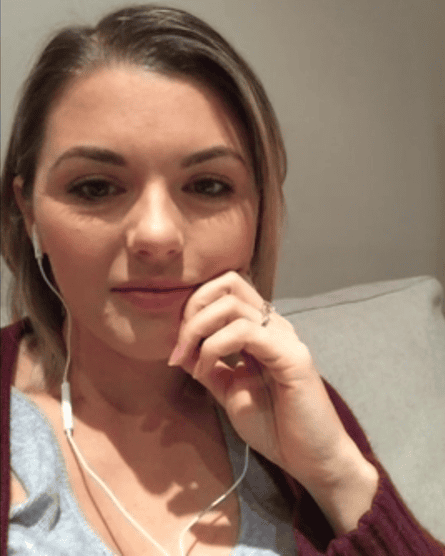
Rose is still acting and lives in Australia now with her fiance and her dog. She’s very aware of how huge Lonelygirl15 was to YouTube and to the internet in general.
“I loved that character. It’s one of my favourites that I’ve ever gotten to play. It’s obviously a huge part, very similar to a younger version of myself and parts of my personality. But I miss Bree, I miss that world.”
People keep asking her if she’ll do her own YouTube videos, but she says she has enough trouble keeping up with her Instagram.
Abu-Taleb now produces his own videos. He also has a stand up routine in which he jokes he’s “YouTube’s first washed-up star”. He says: “It made me feel like moving to LA away from my family wasn’t necessarily a mistake, I felt like maybe I was on the right path to something.
“Down the road you sometimes wish that you had it back or you wish more had happened, or you wish you made different choices. But you never wish that it didn’t happen, you’re always kind of grateful that it did. At least I am.”
Flinders says: “That Summer was so much fun – I’ve never had a more satisfying creative experience in my life.”
I asked them if they think something like Lonelygirl15 could happen again, perhaps on one of the myriad other video platforms which now existalongside YouTube. They were all pretty sceptical. (Although I should note – around the time we spoke, someone released a horror film in real time on Snapchat, inspired partly by Lonelygirl15. But that was starring an already well-known YouTube star with thousands of Snapchat friends, rather than starting from scratch.)
“I think it would be really hard to do something that feels real but isn’t real and have people be fooled anymore,” said Beckett. “There’s been tonnes of hoaxes and other things since Lonelygirl and I think they’ve been figured out pretty damn fast because people are sceptical.”
Flinders added: “On YouTube now we wouldn’t get away with this for 30 seconds. People would know she’s fake immediately.
“No one will ever trust anyone on YouTube again at face value.”
